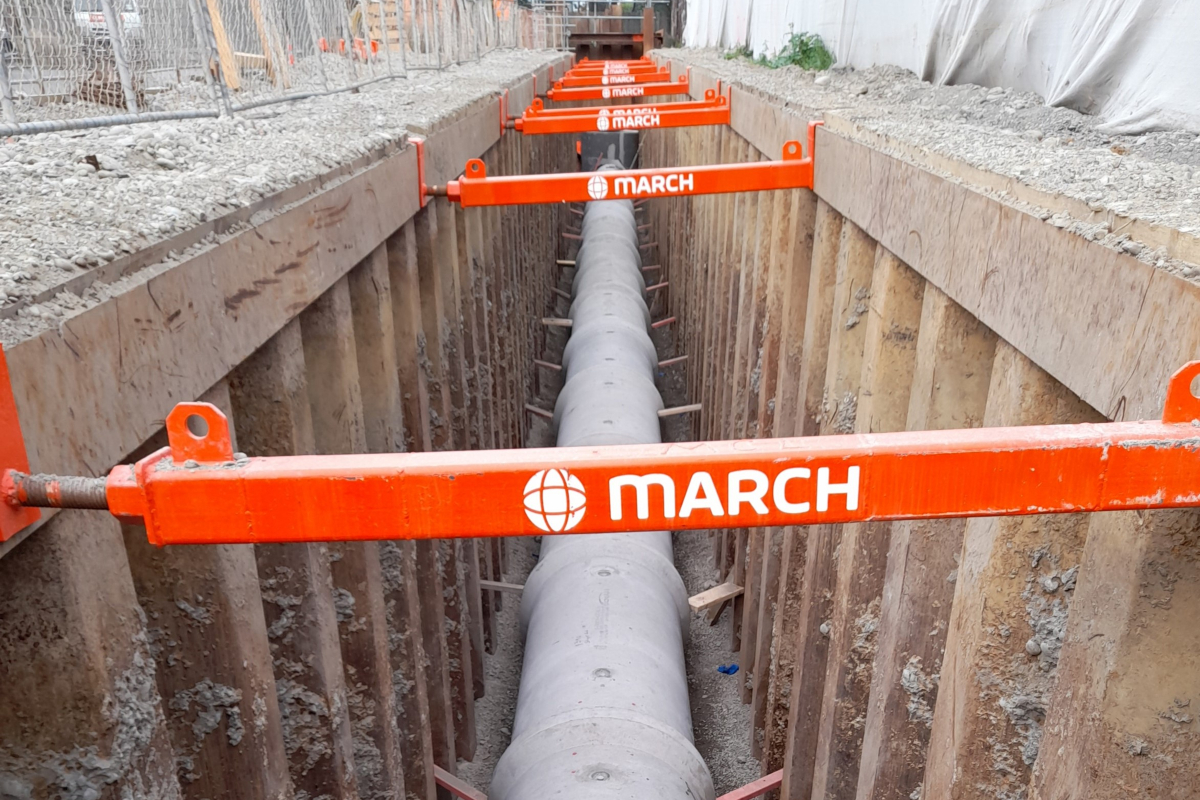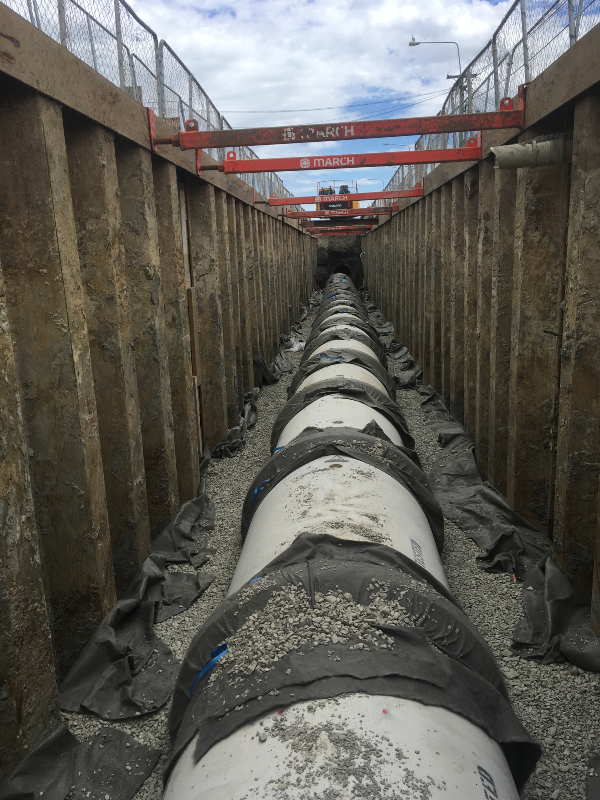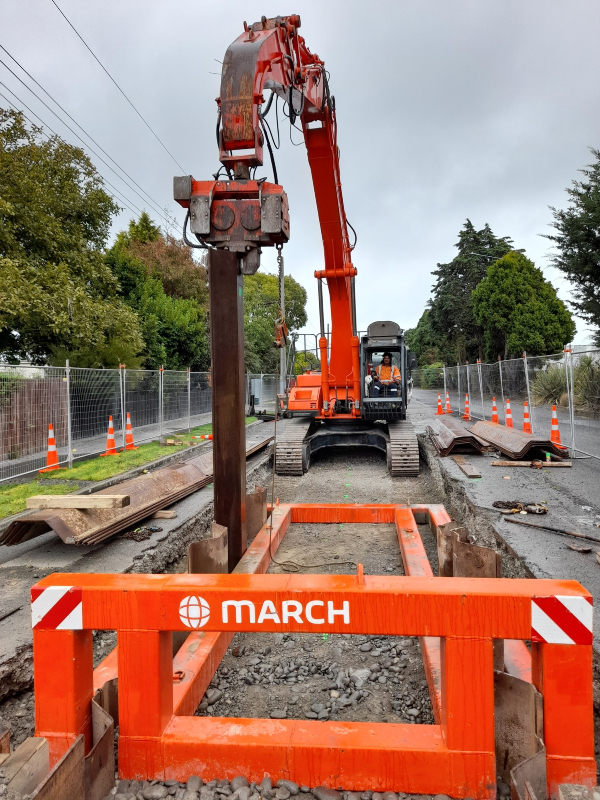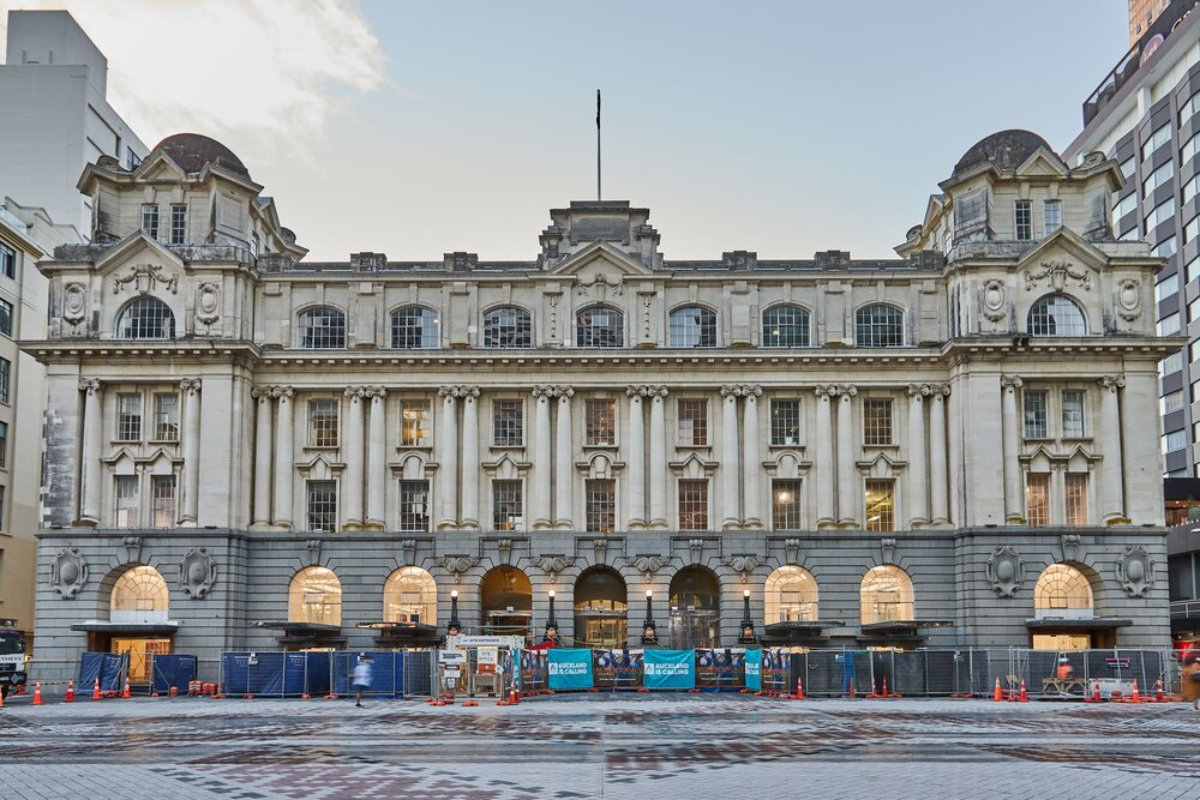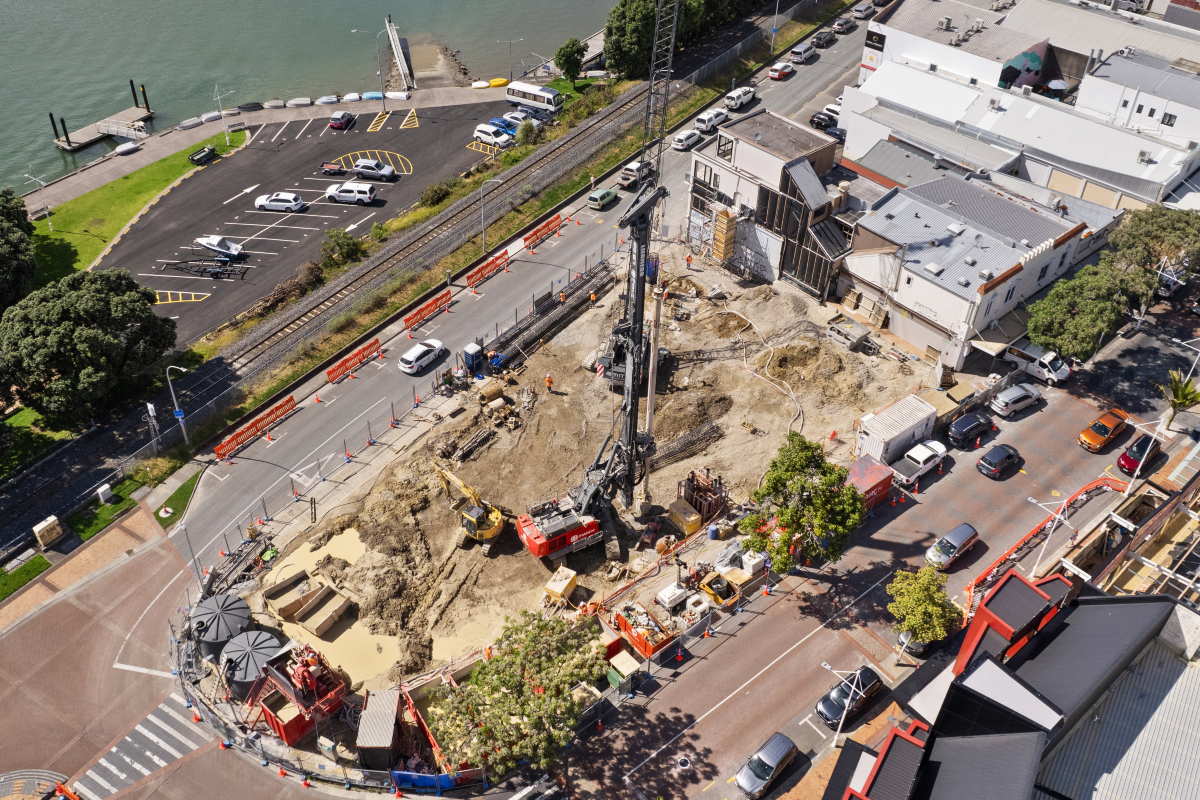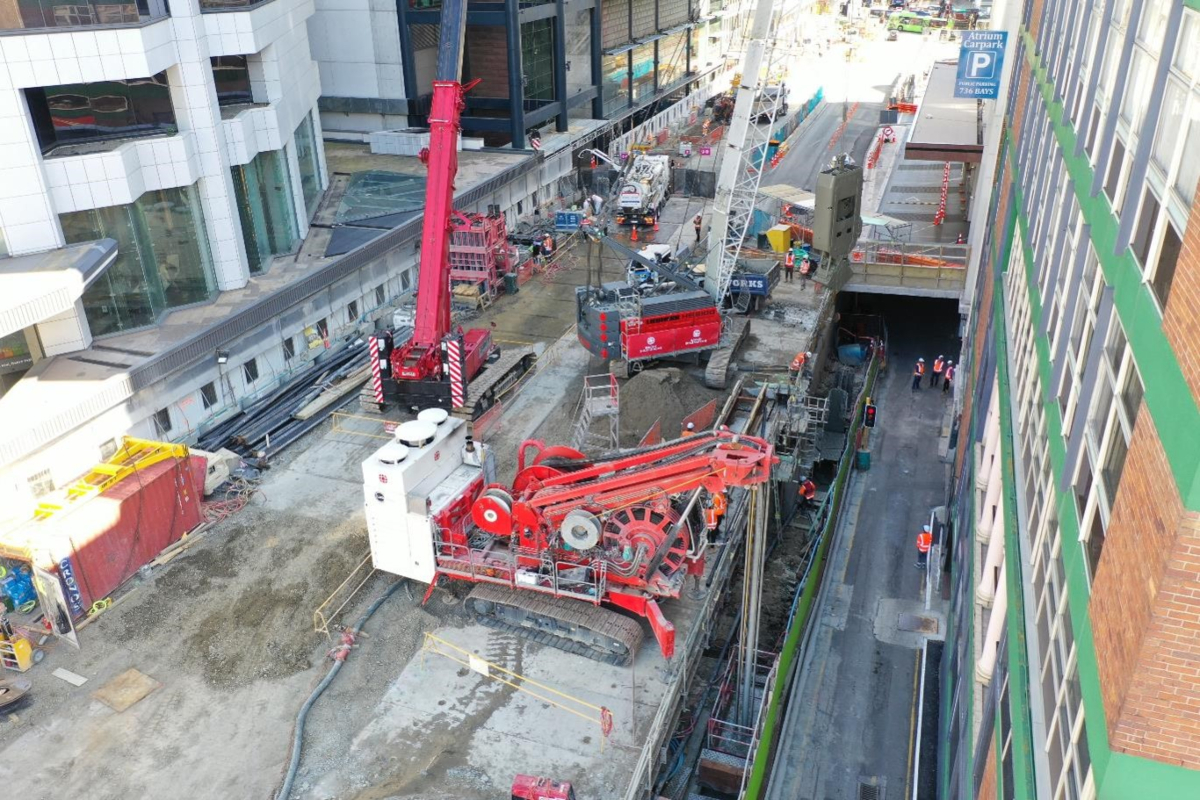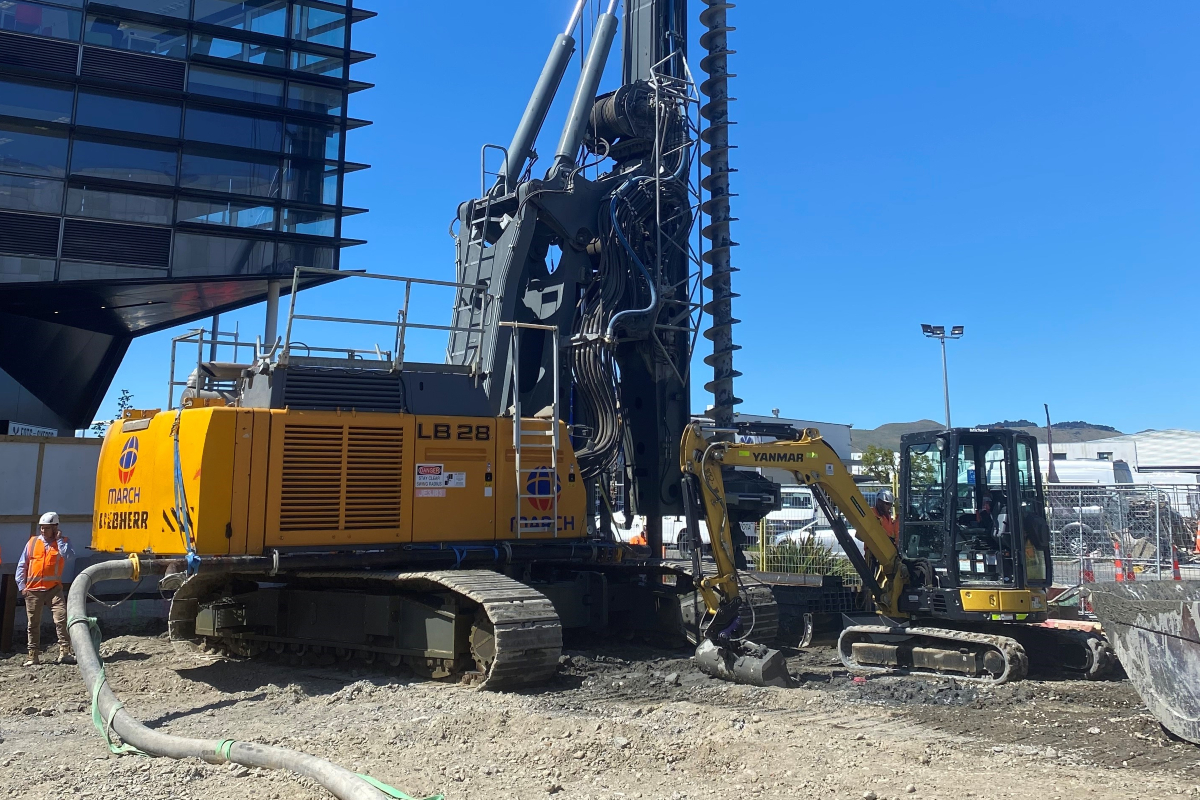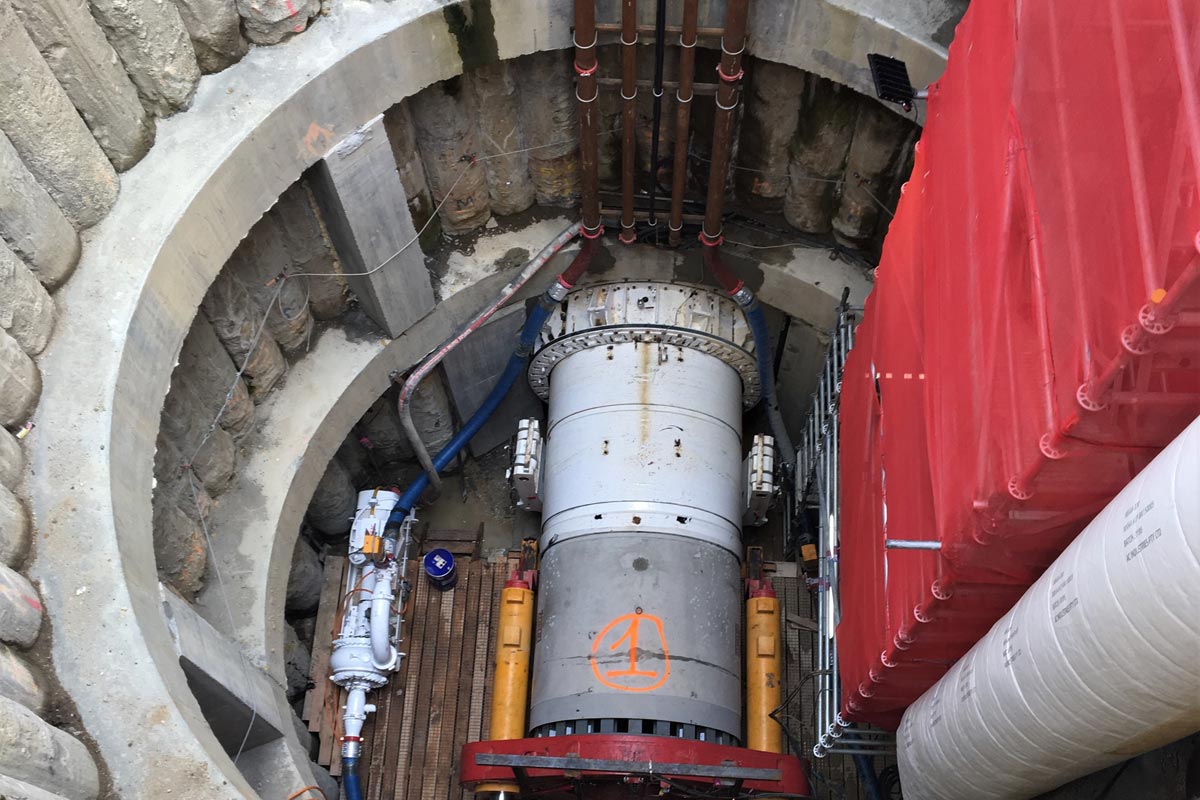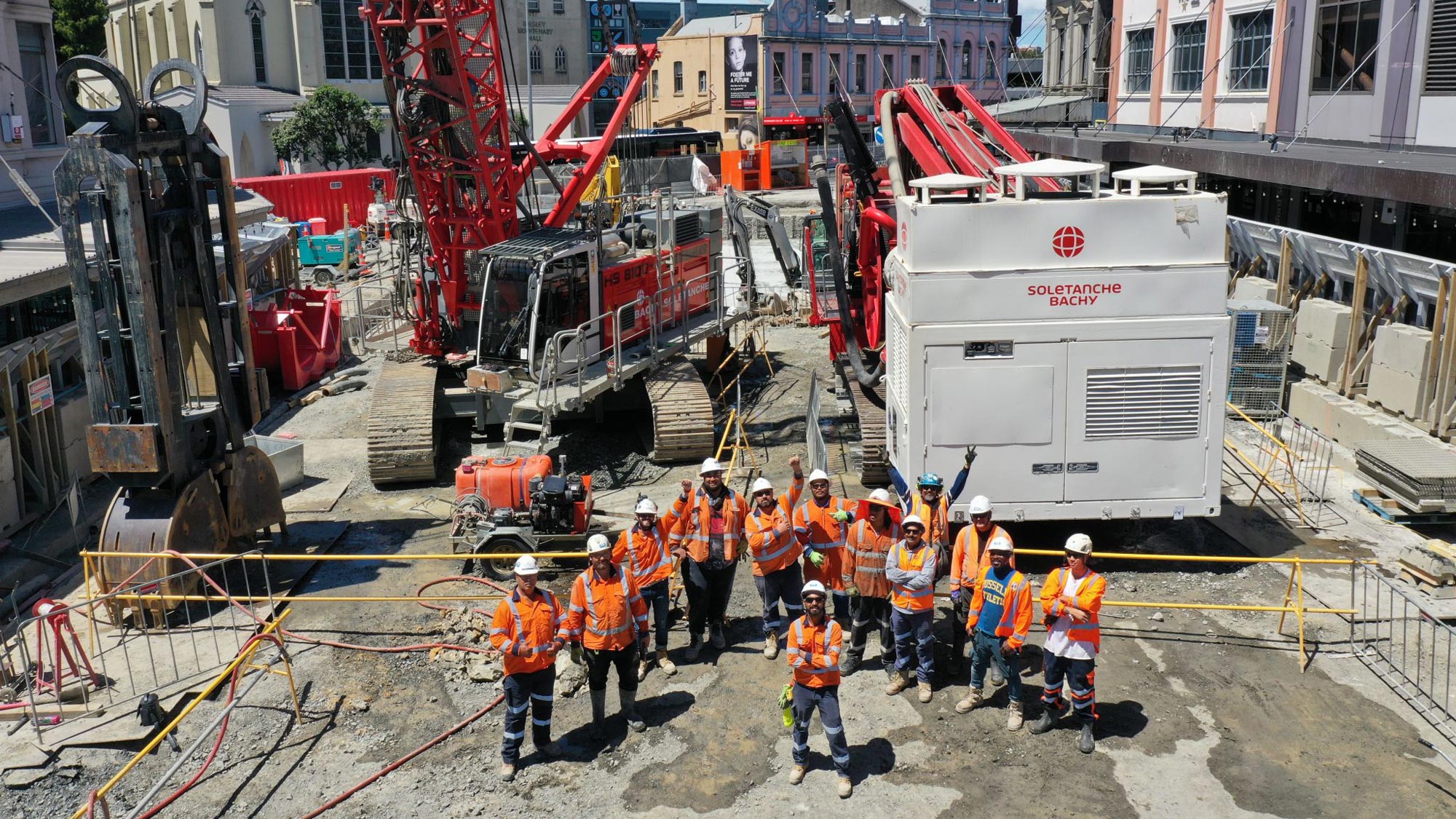Open Cut Pipe Laying
Proven and Efficient Technique
March has significant experience in self-performing deep, difficult drainage structures and are specialists in the installation of large diameter pipelines at depth in saturated ground conditions. March is multi-disciplined in the procurement, handling, open cut laying and jointing requirements for all pipeline materials including HDPE, Steel, Concrete, GRP and PVC for potable water, sanitary sewer and drainage applications.
Our processes
Open cut pipe laying is a common and efficient technique for pipeline construction and involves opening up the surface of the ground, excavating down to the required depth through constructing a trench where the new pipe is to be laid. Following placement of the pipe, the trench is backfilled and compacted to ensure the pipeline is appropriately supported and the surface is restored to the original condition as far as possible.
To support the sides of the excavation and facilitate a safe working environment, temporary support systems are installed in the trench. Where trenches are typically 2 – 3.5m below ground level, March utilises aluminium shields to support the sides of the excavation. Shields provide excellent protection for the workers in the trench and are light and significantly easier to move around the site than traditional steel shields. For trenches where the excavation depth approaches 4m and there is greater risk of groundwater intrusion into the excavation, March installs sheetpiles to provide a durable barrier for soil retention, structural stability, ground water cut off and ensure a safe working environment.
For open cut pipe laying, it is critical a dry trench is achieved and depending on the project requirements, March will manage groundwater either by trench pumping with super silent pumps or through installation of well-point dewatering systems.
Pipe installation is achieved through constructing a trench using excavators to dig up the ground and remove the excavated material, followed by placing and compacting bedding material, surveying the levels to ensure each pipe is placed at the correct depth, grade and alignment. Pipes are placed using an excavator with certified lifting chains, lowered into the trench and joined to subsequent pipes. Backfill material is placed around the pipe and compacted, ensuring no voids are in the haunch zones. Backfill material will be placed along with compaction in layers followed for surface reinstatement and removal of excavated spoil material and disposal off site.
Related projects


